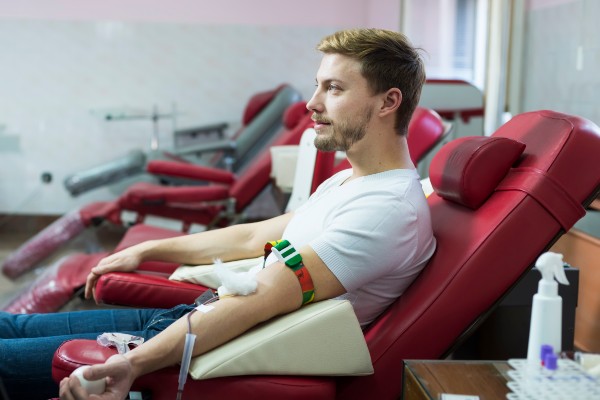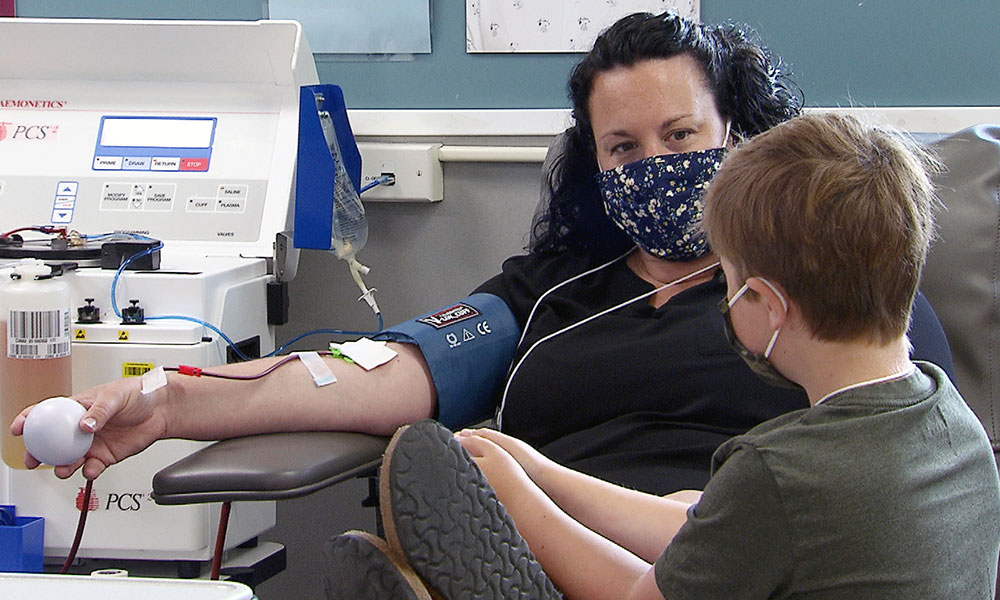Plasma donation is a life-saving act that benefits both recipients and donors. In Calexico, this essential service plays a crucial role in supporting the health and well-being of the community. By donating plasma, individuals contribute to medical treatments and research, making a lasting impact on countless lives.
Understanding the Importance of Plasma Donation
The Life-Saving Role of Plasma in Medicine
Plasma, the liquid component of blood, accounts for approximately 55% of total blood volume, and is primarily composed of water, electrolytes, hormones, wastes, and proteins. Among these proteins are antibodies and clotting factors, which are crucial for maintaining health and supporting recovery from illness. Plasma donation plays an integral role in various medical treatments; it is used to produce life-saving therapies for conditions such as hemophilia, liver diseases, and certain immune disorders. Additionally, plasma-derived products are essential for patients undergoing surgeries, trauma care, and those diagnosed with chronic conditions that require ongoing treatment.
In fact, the significance of plasma cannot be overstated. It is used to create treatments like Immunoglobulin, which helps to bolster immune responses in patients with immune deficiencies, and albumin, which is used to treat conditions related to albumin deficiency. Furthermore, clotting factor concentrates derived from plasma are crucial for individuals with hemophilia, allowing them to lead more normal lives. Each unit of plasma can help multiple patients, making the act of donating plasma not only a charitable deed but a direct intervention in saving lives.
Why Calexico? The Local Impact of Donations
Calexico, located on the border of California and Mexico, has a unique demographic and health profile that makes plasma donation especially pertinent. The community here consists of a diverse population with varying health needs, many of whom might not have easy access to specialized healthcare services. By participating in plasma donation, Calexico residents can not only contribute to the well-being of their local community but also ensure that they are supporting patients across the nation who depend on these critical therapies.
Moreover, local donation centers play a pivotal role in fostering a culture of health and community support. They provide a space where individuals could come together not only to donate plasma but to learn about its importance and impact. In a town like Calexico, where health disparities can emerge due to factors such as socioeconomic status and access to care, plasma donation becomes a community-driven effort to build resilience against disease and illness. Fostering regional donation efforts can significantly increase the accessibility of life-saving treatments for patients who need them most, ensuring that no one has to suffer due to a lack of available plasma-derived products.
How to Become a Plasma Donor in Calexico
Your First Visit: What to Expect
Embarking on your Calexico plasma donation journey starts with your initial visit to a donation center. Upon arrival, potential donors will be greeted by trained professionals who will guide them through the process. The first step usually involves a thorough registration process, where personal information is collected, including health history and lifestyle factors that could affect eligibility. Expect thorough yet straightforward questions aimed at ensuring the safety of both the donor and the recipient of the plasma.

Following registration, a physical assessment will be conducted. This typically includes measuring blood pressure, pulse, and hemoglobin levels to determine if you meet the necessary health criteria for donation. The environment in donation centers is designed to be welcoming and comfortable; donors will be informed about the collection process, which usually involves sitting in a reclining chair while blood is drawn through a sterile needle inserted into one arm. The plasma is then separated from other blood components via a process called plasmapheresis, and while this might sound intimidating, the procedure is safe and often completed within an hour.
During this time, donors can engage in light activities like reading or watching television to help make the experience more enjoyable. After the donation, individuals are encouraged to rest, enjoy refreshments, and hydrate to replenish lost fluids. Education and care don’t stop at the donation; staff will also provide information about post-donation wellbeing, ensuring all donors leave feeling empowered by their contribution.
Eligibility Criteria: Are You Ready to Save Lives?
Becoming a plasma donor in Calexico requires meeting certain eligibility criteria aimed at ensuring safety and health for both donors and recipients. Generally, the minimum age to donate plasma is 18 years, and donors must weigh at least 110 pounds to safely undergo the collection process. Additionally, potential donors should pass the health screenings conducted at donation centers; these checks often include questions concerning recent medical treatments, travel history, medications, and lifestyle practices such as drug use.
Specific conditions might disqualify individuals from donating plasma — for instance, individuals with chronic illnesses, recent infections, or recent vaccinations (depending on the vaccine) may be temporarily or permanently ineligible. It’s also essential for potential donors to be free from infectious diseases, particularly those transmitted through blood, to help ensure the safety of the donated plasma. It’s advisable for anyone considering donation to check with their local donation center for complete and updated eligibility requirements, as guidelines can change based on new medical insights or public health considerations.
The Experience of Donating Plasma: Myths vs. Reality
Debunking Common Misconceptions
One of the significant hurdles to increasing plasma donations is the array of myths that surround the process. One prevalent misconception is that donating plasma is painful; however, most donors report that the initial needle prick feels similar to any standard blood donation and is quite manageable with the right preparation. It’s important to remember that advancements in the technology and training of staff have made plasma donation significantly safer and more comfortable than in the past.
Another myth is that donating plasma can severely impact your health or energy levels. In reality, most individuals are perfectly able to resume normal activities shortly after donating plasma. The body is remarkably equipped to regenerate the plasma component quickly, usually within 24 to 48 hours. The recovery process is supported by hydration and nutrition; thus, if donors maintain a healthy diet and drink plenty of fluids, they may not notice any ill effects from their donation.
Additionally, some believe that plasma donation only helps chronic patients or those with specific conditions, when, in fact, the plasma is used in a vast array of medical treatments that impact people of all ages and demographics. Educating the public about the diversity of plasma applications — from burn treatment to immune therapy and surgical recovery — can help dismantle these misconceptions and encourage broader participation in donation initiatives.
The Real Feel: Donor Testimonials from Calexico
Donor testimonials provide valuable insight into the experience of giving plasma and the profound personal significance it carries for many individuals. Many residents of Calexico have shared transformative stories about their own motivations for donating plasma, often stemming from personal experiences with illness or a deep-rooted desire to make a tangible impact in their community. For instance, a donor might recount how their family member was a recipient of plasma-derived therapy, inspiring them to contribute to the same life-saving resource that once helped their loved one.
Donors often describe their experiences at donation centers as positive and fulfilling. Many report feeling a strong sense of community and purpose, particularly when they learn about the diverse lives they are helping to improve. Testimonials often emphasize how well-staffed centers facilitate a welcoming atmosphere, making it easier for first-time donors to overcome any anxieties related to the donation process. Moreover, the act of contributing leads to feelings of empowerment and connection; donors feel proud that their actions are contributing to something greater than themselves.
For others, the regularity of donating plasma provides an ongoing opportunity to engage with their community proactively and offers them a platform for advocacy. Many suggest that the experience of sharing their stories encourages friends and family to become donors themselves and to participate in community events aimed at raising awareness about plasma’s vital role. These narratives reinforce the importance of community in healthcare, demonstrating how collective efforts can lead to significant breakthroughs in health outcomes.
Community Engagement: Building Awareness and Support
Events and Initiatives to Promote Plasma Donation
To boost plasma donation rates in Calexico, community engagement through awareness campaigns and events is critical. Local health organizations, blood banks, and educational institutions regularly collaborate to organize events aimed at informing the public about the significance of plasma donation. These events often take the form of health fairs, informational seminars, or targeted outreach programs in collaboration with schools and local businesses.
During such initiatives, educational materials are distributed to illuminate the myriad of ways plasma can save lives, as well as to present firsthand accounts from both donors and recipients whose lives have been positively affected by plasma donations. These events often culminate in opportunities for attendees to register and donate on-site, creating a direct link between awareness and action. Collaborating with local influencers or well-known community figures can significantly increase participation rates, as their endorsements inspire trust and encourage wider diverse participation.
Moreover, initiatives focused on underrepresented communities are essential. In multicultural areas like Calexico, outreach should be conducted in multiple languages and culturally appropriate contexts to effectively resonate with all segments of the populace. Tailoring communication strategies ensures that misinformation is dispelled, and understanding of the donation process increases. Such community-centric efforts rally support and aim to normalize plasma donation as a routine part of community health initiatives.
The Role of Local Organizations in Plasma Advocacy
Local organizations have the power to catalyze efforts in promoting plasma donation, ensuring the availability of this life-saving resource within the community. Nonprofits, health advocacy groups, and local healthcare providers often come together to create a robust network that champions plasma donation. These organizations are focused not only on increasing the number of donors but also on educating the public about plasma’s critical role in medicine.
Through community forums, dedicated social media campaigns, and collaboration with educational institutes, these organizations disseminate information and engage groups across various demographics. They play a crucial role in mobilizing volunteers for donation drives and advocating with policy-makers to establish supportive frameworks for plasma collection facilities. Their efforts are essential for fostering a culture of donation, building strong partnerships, and ensuring long-term sustainability in plasma supply.
Furthermore, many local organizations conduct follow-ups with donors post-collection, offering support and encouragement while celebrating the sense of community and collective achievement. This kind of continued engagement promotes further donations and fortifies the relationship between the community and health systems, cementing the recognition of plasma donation as a vital community service initiative. Together, these organizations build a legacy of health consciousness and community support that transcends the act of donation itself.

